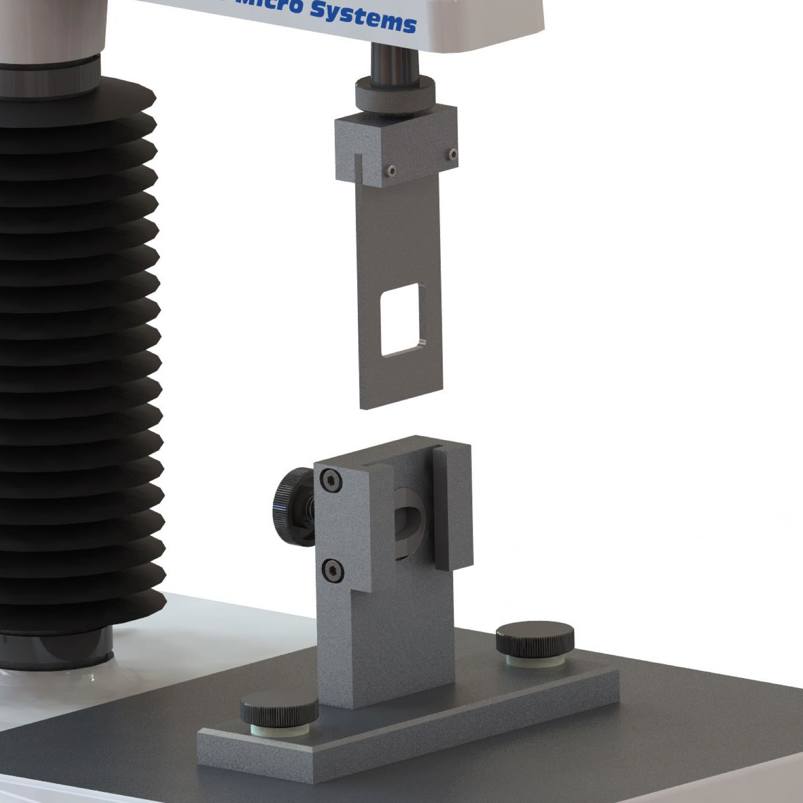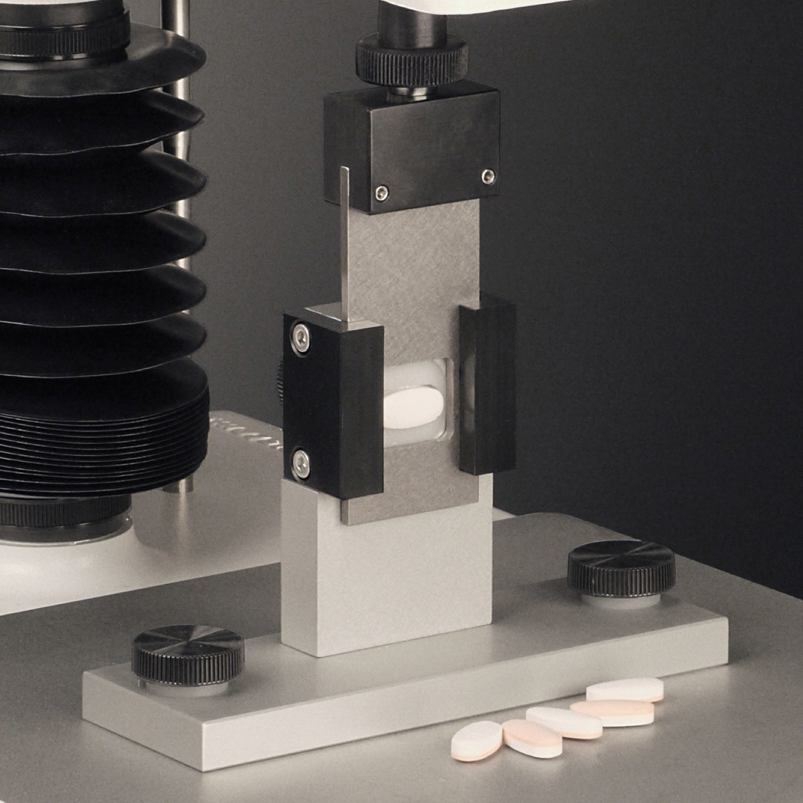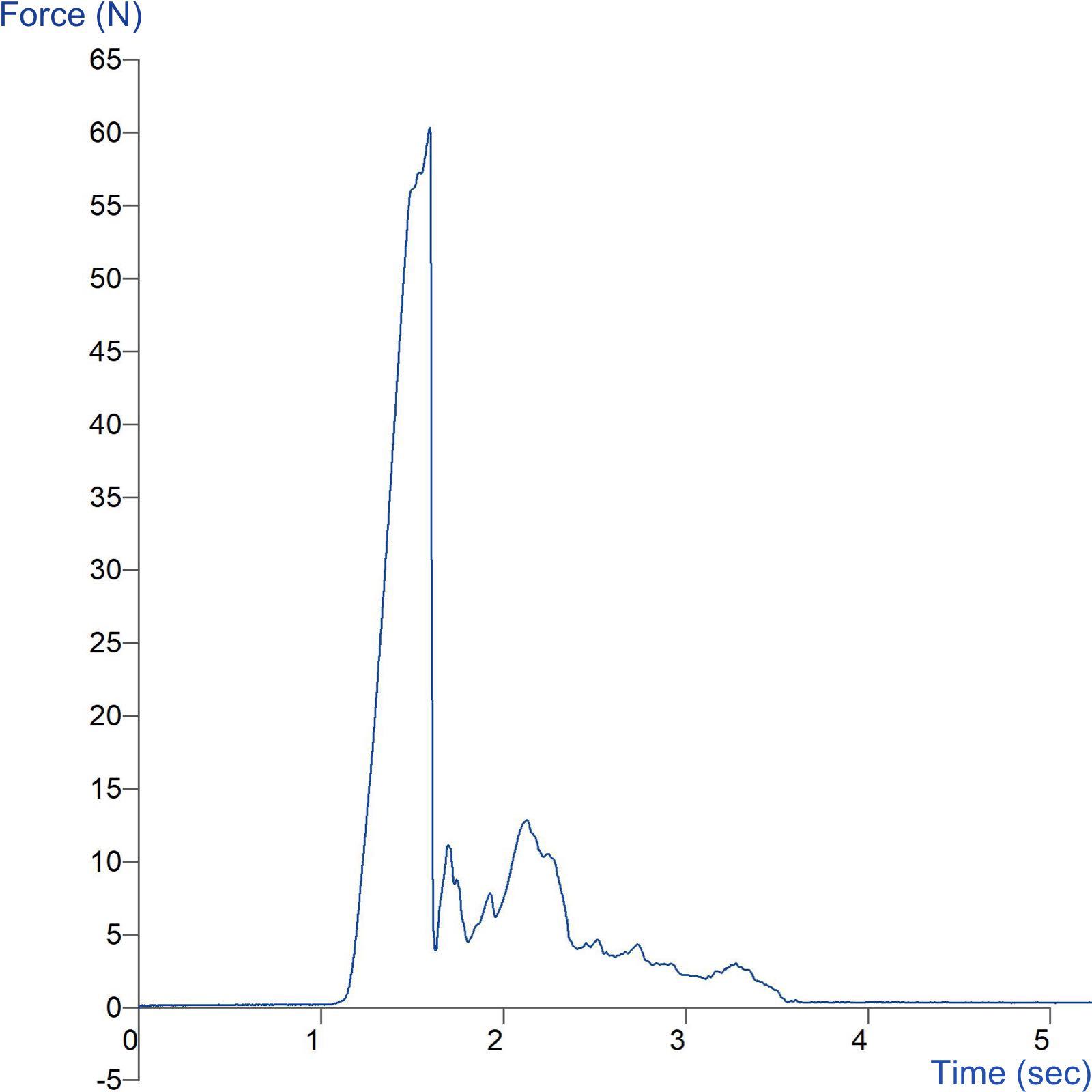Product overview
Bilayer systems typically contain an immediate-release component in one layer and the extended-release component in the other layer. However, the development and production of quality bilayer tablets is not without issues such as layer separation. The Bilayer Tablet Shear Rig provides the means to assess this problem. The bilayer tablet fits into the central cavity of a guillotine-type blade and is then compressed until the two components of the tablet are sheared apart. The shear force and distance to failure are measured.
Visual characterisation of the fracture surface is necessary to quantify the percentage of each fracture failure mode. This enables manufacturers to optimise their tablet formulations for adhesion of the two tablet components.
How does the Bilayer Tablet Shear Rig work?
Ideal sample form
Solid materials that consist of two obvious layers that have been adhered together in some way.
Benefits and limitations
- This attachment is made bespoke to a specific sample shape and size.
- This attachment needs to be made bespoke to the sample for optimum sample support.
Optional extras
Additional insert - A/BTSI
Technical information
Installation
Full installation instructions are provided within the Education Zone of the latest Exponent/Connect software version and on the technical information sheet accompanying this product.
Chemical compatibility
Stable Micro Systems probes and attachments are commonly made from four materials: anodised aluminium (AA6082 T6), stainless steel (316 T), Delrin (acetyl copolymer) and Perspex (polycarbonate).
In general use, probes and attachments made from these materials will be suitable for testing food products and inert non-food materials.
The four materials listed above are not universally resistant to all types of chemicals and as such the compatibility of the probe/attachment material with the product (to be tested) must be established to prevent damage to the probes and attachments. If the compatibility of the product with the probe is unknown to the customer then the chemical information about the product (Material Safety Data Sheet or Product Data Sheet) should be submitted to Stable Micro Systems. Stable Micro Systems will then assess the suitability of the probe/attachment material for use with the product and advise accordingly. If this advice is not sought then Stable Micro Systems will not accept liability for probes/attachments damaged by chemical attack from the product being tested.
Cleaning and maintenance
All probes and attachments may be cleaned in warm (or hand hot) water using a mild detergent. A soft brush may be used but abrasive cleaning aids should be avoided. Stable Micro Systems products should not be microwaved or cleaned in a dishwasher.
Screw threads should be lightly lubricated after drying using a light lubricant, e.g. petroleum jelly, mineral oil. This will aid the fitting and unscrewing of the item. Each component of a probe or attachment should be wrapped separately when stored, to avoid scratching or chipping. This will safeguard against any unnecessary damage to the accessory.



